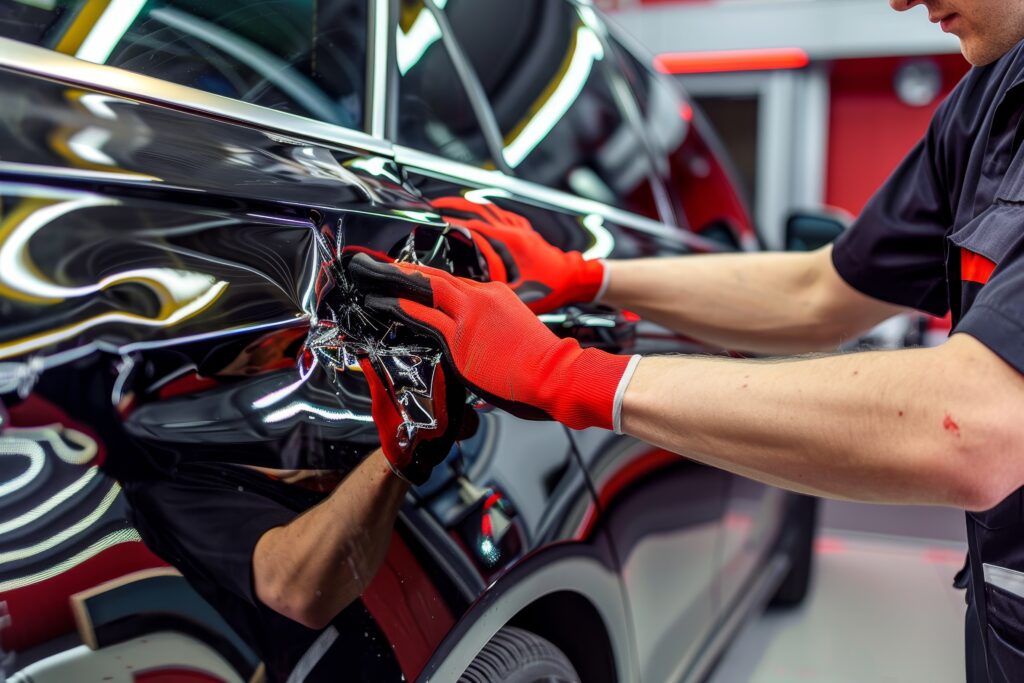
In the world of automotive repair, paint-less dent removal (PDR) has emerged as a cutting-edge technique that offers an efficient solution for dented vehicles without the need for traditional bodywork. This method stands out not only for its effectiveness but also for its environmentally friendly approach, as it often requires no paint or fillers. Understanding the scientific principles behind PDR is essential for both technicians and vehicle owners who wish to grasp how these techniques can restore a car’s aesthetic integrity without compromising its original finish.
PDR is increasingly becoming the preferred method for fixing minor dents, especially those caused by hail damage or shopping cart collisions. This article delves into the fundamental principles of PDR and the physics that underpin its effectiveness, offering insights into how these techniques work and the advantages they provide over conventional dent repair methods.
Exploring the Principles of Paint-less Dent Removal Techniques
Paint-less dent removal relies on manipulating the metal of a vehicle in a way that allows it to regain its original shape. The technique typically involves using specialized tools to massage the dented area from behind the panel, applying controlled pressure that pushes the metal back into place. By focusing on the specific contour of the damage and leveraging the inherent properties of the metal, technicians can achieve remarkable results without the need for paint or filler.
One of the key principles of PDR is understanding the metal’s elasticity. Most vehicle panels are made from materials that have a degree of flexibility, allowing them to bend rather than break under stress. Skilled technicians utilize this property to restore the panel’s shape by carefully assessing the dent’s depth and location. This requires a keen eye for detail, as even the slightest miscalculation can lead to visible imperfections. The art of PDR thus combines technical knowledge with finesse, emphasizing the importance of both theory and practice.
The Physics Behind Effective Dent Repair Methods Explained
At the core of paint-less dent removal is the application of physics, particularly the concepts of tension and pressure. When a dent occurs, the metal stretches and compresses, creating a disruption in its original form. PDR techniques focus on reversing this process by redistributing the metal’s surface tension. By applying pressure from behind the panel, the technician can coax the metal back into its original shape without damaging the paint. This careful manipulation is crucial, as the goal is to restore the vehicle’s appearance without sacrificing its structural integrity.
Another critical aspect is the role of heat in PDR. By using a heat source, technicians can temporarily soften the paint and metal, making it easier to manipulate. This process not only aids in reshaping the metal but also helps to reduce the risk of cracking or chipping the paint during repair. The combination of temperature control and precise tool use allows technicians to achieve a seamless finish, ensuring that the vehicle retains its value and aesthetic appeal.
Understanding the science behind paint-less dent removal techniques reveals the intricate balance of skill, physics, and artistry involved in this innovative repair method. By leveraging the unique properties of metal and employing advanced techniques, PDR offers an efficient alternative to traditional dent repair processes. As awareness of this technique grows, more vehicle owners are recognizing the benefits of maintaining their car’s original finish while effectively addressing unsightly dents. With its blend of practicality and precision, paint-less dent removal is undoubtedly a game-changer in the realm of automotive care. Simply Dents, your trusted PDR expert, 951.378.6662

